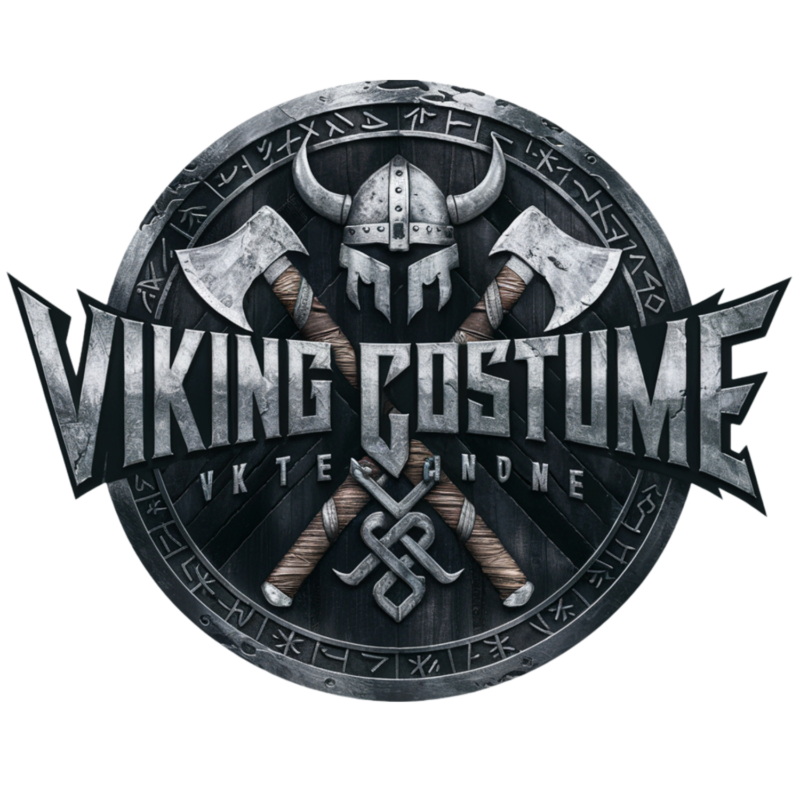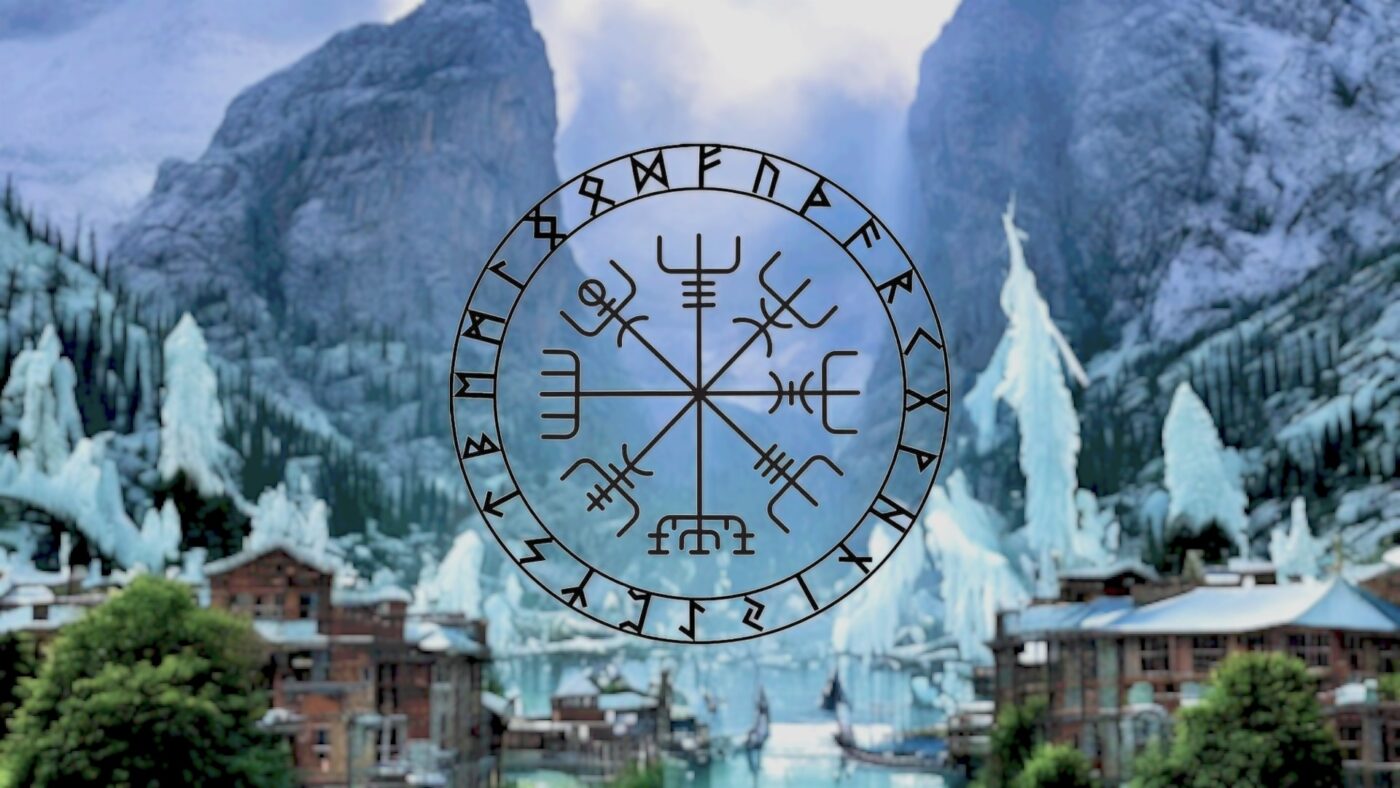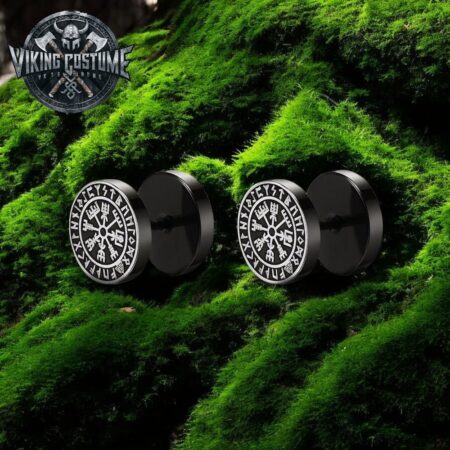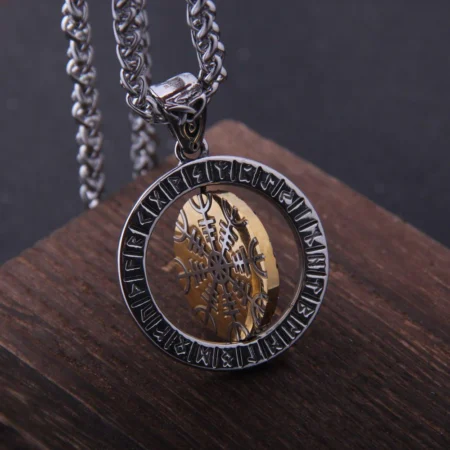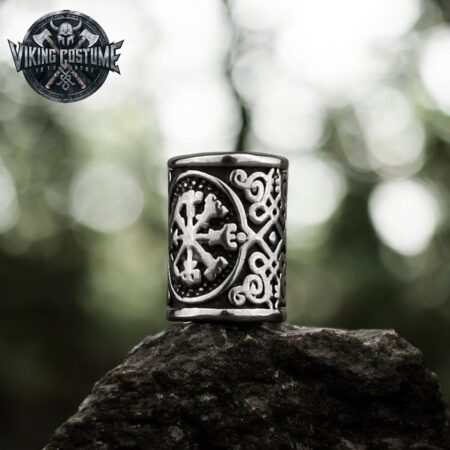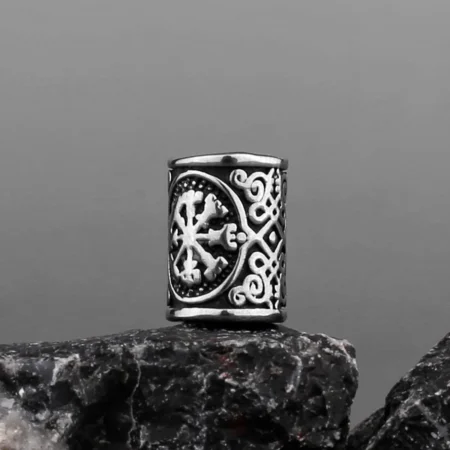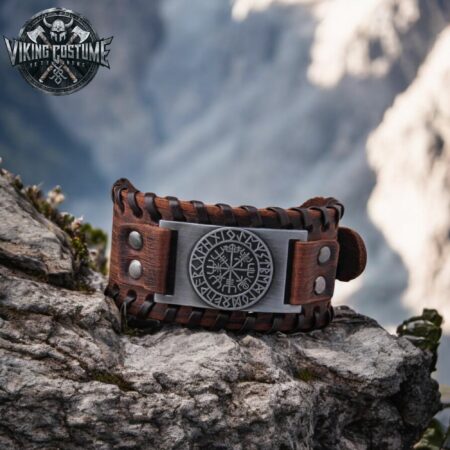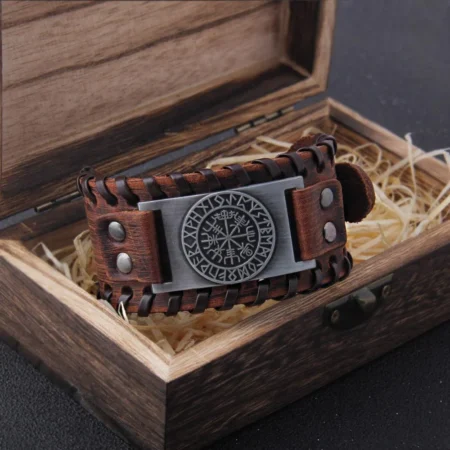Blog, Viking History & Mythology
Viking Compass: The REAL Meaning and Its Original Story
The Vegvisir, commonly known as the Viking compass, is a symbol of mystery and fascination. Although it is closely associated with Viking culture, its origin and true meaning are still a subject of debate. In this article, we will explore the history, symbolism, and misconceptions surrounding the Vegvisir – the symbol commonly known as the Viking compass.
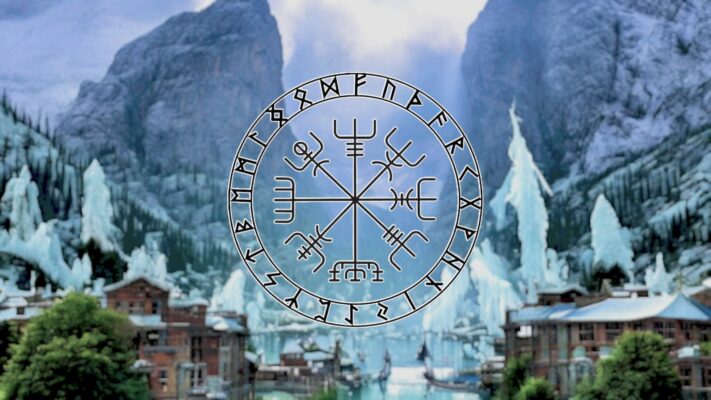
Symbol Vegvisir
Vegvisir, in Old Icelandic, means “That which points the way.” The symbol is designed with many branches extending from a circular center, resembling a compass. Many believe that Vegvisir helps its wearer find his way, whether in storms or difficult journeys – both in real life and on a spiritual journey.
Vegvisir first appeared in the Huld Manuscript in 1860, a book of magical symbols from Iceland. In it, Vegvisir is described as an amulet that keeps the wearer “from losing their way, even in stormy weather.” It is this description that often leads to its association with the Viking compass, although its origins may not be directly related to the Viking era.
Today, Vegvisir has transcended history to become a symbol of resilience and the ability to navigate life.
Origin of Vegvisir
The origins of Vegvisir can be found in the Huld Manuscript, a collection of magical symbols and charms from Iceland. However, this book dates back much later than the Viking Age (8th–11th centuries), leading many to question whether Vegvisir was actually a Viking symbol.
In addition, other ancient books such as the Galdrabók (Icelandic Book of Spells) also contain many similar symbols, but do not directly mention Vegvisir. This suggests that the idea of navigational symbols existed before, although not specifically associated with Vegvisir.
Some researchers believe that Vegvisir may have been influenced by Viking seafaring traditions, but there is no concrete evidence that it was ever used as a practical navigational tool. Instead, Vegvisir has a spiritual meaning, as a symbol to help people find their way through difficulties and obstacles.
Viking Compass
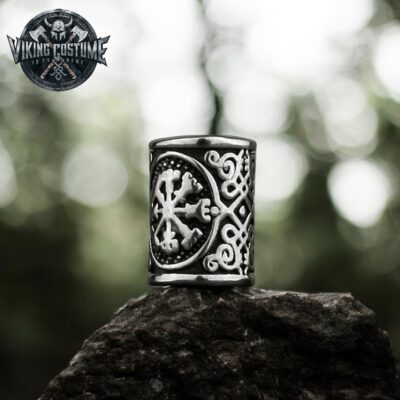

The Vegvisir is often referred to as the Viking compass, but is this true? In fact, the Vikings used tools such as sunstones and natural landmarks to navigate while at sea, not the Vegvisir.
Nevertheless, the Vegvisir is a profound reflection of how the Vikings viewed navigation. For them, navigation was not just about finding their way at sea, but also about a spiritual journey, a search for clarity and purpose in life. The eight-pronged shape of the Vegvisir symbolizes clarity, the ability to navigate in any situation.
Today, the Vegvisir is often romanticized as a Viking compass symbol, representing the adventurous and resilient spirit of the ancient Norse. Although not a practical compass, the Vegvisir still evokes the spirit of exploration and the strength to overcome adversity.
Meaning and usage of Vegvisir symbols
Vegvisir is not only a symbol of direction, but also carries deep meanings of protection and resilience. Seen as a talisman, Vegvisir represents clarity, inner strength and the ability to overcome any challenge.
In ancient texts, Vegvisir is believed to have magical powers, often engraved on objects or drawn on the skin to protect the wearer from getting lost or encountering danger. Although it does not appear in Viking times, in later Icelandic documents, Vegvisir is considered a precious symbol, bringing peace of mind to the owner.
Today, Vegvisir has become a popular symbol in tattoos, jewelry and art. With its strong association with Viking culture and deep meaning, many people look to Vegvisir as a way to connect with spiritual strength and ancient Norse heritage.
Vegvisir’s Connection to Ancient Norse Runes

The branches of Vegvisir resemble the runes – the ancient Norse alphabet. Runes are not only used for writing, but are also considered sacred symbols with magical powers. Each rune has its own meaning, such as protection, journey, or inner strength.
Vegvisir and runes have a strong connection in representing guidance and protection. Some runes such as Algiz (protection symbol) or Raidho (journey symbol) have similar meanings to what Vegvisir represents. This further reinforces the idea that Vegvisir is not simply a guiding symbol but also a spiritual tool in the spiritual journey.
Vegvisir is often combined with runes to create unique jewelry designs, tattoos or artwork, preserving the historical value of this symbol
What if Vegvisir wasn’t a Viking symbol?
Have you ever wondered, “What if the Vegvisir, the symbol commonly known as the Viking compass, was not actually invented by the Vikings?” This question makes us think more deeply about the origins of the symbol and how it has been passed down through time.
If we look at historical documents, such as the Huld Manuscript, we find that the Vegvisir appears much later than the Viking period. This suggests that it is likely not a product of ancient Viking culture, but rather an evolution from later Icelandic traditions.
However, that does not diminish the powerful meaning of the Vegvisir. It remains a symbol of protection and guidance, imbued with the spirit of the Vikings – even if it does not actually originate from the Viking era. More importantly, it is how we understand and celebrate this symbol today that determines its longevity.
The True Meaning of Vegvisir
Vegvisir, whether or not it was truly a Viking compass, remains a powerful and meaningful symbol. Representing protection, guidance, and resilience in the face of challenges, Vegvisir embodies core Viking values such as strength, wisdom, and perseverance—qualities that continue to inspire us today.
If you’re drawn to the symbolism of Vegvisir explore the curated collection of products showcased below. Discover the perfect piece to bring the spirit of Norse mythology into your life!
